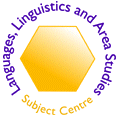
|
|
Silverom Chinese-English DictionaryThis is a longer version of a review which was published in ReCALL Newsletter Number 16, March 1999 Supplier: Silverom Technologies Pte Ltd, 420 North Bridge Rd #03-04 North Bridge Centre, Singapore 188727, Tel: 65-3363511 Fax: 65-3371337, [email protected], http://www.asia-mfg.com/client/silverom System requirements: 386 processor or better, 4MB RAM, 3MB hard disk space, CD-ROM drive and MPC compatible sound card. Windows 3.1 or later. No Chinese operating system required. Price: $65 single user, $95 site licence This Chinese-English dictionary is intended for an English-speaking learner of Chinese, (and not a Chinese learner of English). It can also be used as an English-Chinese dictionary, but less satisfactorily. This needs pointing out from the outset, since its purpose and usefulness is really rather limited. It is easily installable, bug-free and an attractive easy-to-use package. Interestingly, however, it did not install successfully onto the Chinese version of Windows. It comes on a CD, but in terms of size it is not much more than a floppy. Its special features are the pictures accompanying many of the words and Chinese pronunciation of each word. The general layout in tables and grids of words is similarly helpful and attractive. Chinese dictionaries are arranged in two basic ways - alphabetically according to their romanized pronunciations, or by number of strokes in the radical of the character. Both are possible with this software, although only the pinyin-type romanization is used. Words can also be found according to the total number of strokes. In addition, it is possible to type in an English word and find the Chinese equivalent. However, there are a number of general limitations:
The pictures are clear and bright and generally helpful, we think, particularly in the absence of any English explanation. Occasionally there are faults: if you look up ‘cauliflower’ (cai-hua), you will see a picture of a cabbage (cai). The Chinese examples of the words and phrases are clear enough - and not especially complex in themselves. Nevertheless, in order to understand them, the learner will need more than a basic grasp of Chinese. It is unlikely that such a learner will benefit much from the pronunciation or the pictures. The lack of English help is a particular problem. So the Chinese instrument zheng is given simply as ‘as kind of musical instrument’ rather than a Chinese zither. Look up ‘change’ and you’ll find half a dozen entries: you will have to look at them one by one in order to tell them apart. One useful thing for a learner of Chinese is to learn compounds - the way a character combines with other characters to give new words. You can hear these spoken individually or in a list, but the list is rattled off and there is no way of controlling the speed. For some reason, words with a neutral tone are unduly clipped. A single font is used, and this too is something of a limitation. However, apart from the example phrases and sentences, everything is very clear to read. There are two ways in which we found the software useful and satisfying to use. It is possible to flick (alphabetically) backwards and forwards through the dictionary. Generally speaking, the dictionary is clear and well laid out and the pictures and pronunciation do bring it alive. Secondly it was possible to read and listen to the lists of compounds - and, with the proviso of the speed, this was an interesting browsing activity. All in all, the software is of too limited use to recommend it wholeheartedly. Despite its claims, it has not been well thought through from a learner’s point of view. There is quite a lot of Chinese language software available now which has been imaginatively designed, besides word-processing packages with more versatile (if less colourful) dictionaries included. However, it does have the advantages of allowing you to listen to words and to record your own voice, as well as the picture help. The presentation is excellent, and from this point of view at least it is a pleasure to use. It is reasonably priced at $65 for a single user, $95 for a site licence. Tim and Jianping Francis University of Bath |
 |
 |